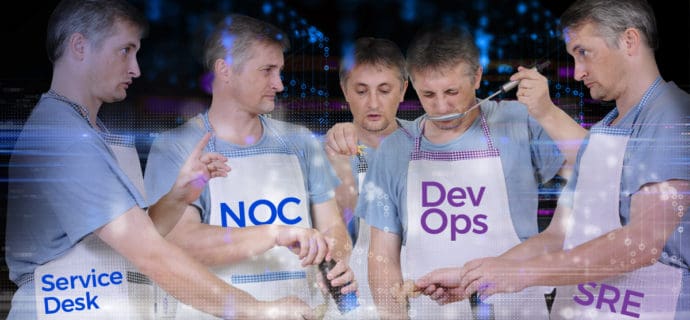Single pane or single pain of glass?
Updated: January 10, 2020
Category: Ops and Teams
Author: BigPanda
A lot has been written about the ever-elusive “Single Pane of Glass” (or SPOG).
From calling it a myth like BigFoot or The Loch Ness Monster , to reporting that “a centralized, service-centric view into IT environments has become a must-have capability for IT Operations” (Digital Enterprise Journal Study), both opponents and proponents admit that the implementation of a centralized view into IT Ops is a real need, but at the same time, a major operational challenge.
The Dream
The twin challenges of IT transformation and increasing IT complexity are forcing IT Ops teams to rely on many siloed and often complicated, difficult-to-use consoles. The simplest of actions frequently require multiple steps and cross-team collaboration, slowing down real-time troubleshooting and impacting IT Ops teams’ productivity and efficiency. So the “dream” of a consolidated, easy-to-use view into IT Operations is not driven by the need for comfort, but rather by the real risk of business-crippling outages and the danger they pose to critical digital transformation initiatives.
The Wakeup Call
While most of today’s IT Ops tools are API-enabled and can, in theory, be consolidated into a central operations console (the proverbial SPOG), the underlying reality is that the various vendors in the industry differ in their point of view of infrastructure and IT Operations, and so the creation of a common single window for all of them becomes extremely challenging.
Vendors might name and represent the same element differently – a “cluster” for one may be a “farm” to another, or a “pool” for a third. Or they might have the same name for totally different elements – a “Virtual Server” for an application delivery vendor means something very different than what it does for a virtualization vendor. IT Ops tools are not really speaking the same language either, and are also looking at infrastructure differently. Add today’s proliferation of IT Ops vendors to the mix, each releasing several new features every week – and it’s easy to understand why creating a Single Pane of Glass for all of this is, well… a pain. That is why SPOG has been so elusive.
One way to overcome this problem would be to take the single-vendor, monolithic road. But recent years have shown that this is simply not good enough. No single vendor provides best-of-breed capabilities across the various monitoring, correlation and collaboration competencies required in today’s enterprise IT stack.
There is a way
So what is the solution? As digital transformation accelerates, a unified view into IT Ops is more necessary than ever. IT Ops teams need actionable and context-rich insights to effectively monitor and manage their infrastructure, applications and services, they need end-to-end visibility and they need to be able to easily collaborate between their teams and with their business partners.
At the same time, the increasingly prevalent “best-of-breed” strategy in Enterprise IT means that IT Ops teams are using the tools that are best suited for their monitoring, correlation and collaboration needs – often from different vendors, with different consoles and UIs that represent data and information differently.
Given these realities, the winning approach would be to implement a single-pane strategy only where it is most needed and effective – in the correlation and automation layer of the IT Stack.
By providing a summary view into correlated, enriched incidents – a unified AIOps-powered Event Correlation and Automation Console is the perfect starting point for IT Ops teams. Here they can easily visualize the overall health of the infrastructure, drill down into selected incidents and see the probable root cause surfaced by AI / Machine Learning.
Then, teams can either drill down into their existing, integrated monitoring tool for forensics and deeper insights. Or they can share and escalate through their integrated collaboration or notification tools.
So is the Single Pane of Glass attainable or is it a myth?
If you want it to encompass your entire IT Ops stack, it probably is and will remain a myth. But if you implement it where it most counts, it is a reality.





